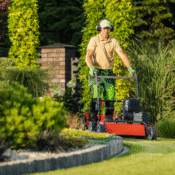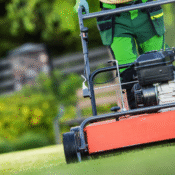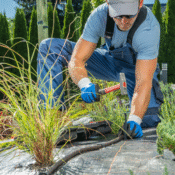
February 16, 2025
Transforming Your Lawn: From Patchy to Perfect
A lush, green lawn is the cornerstone of a beautiful landscape. But what if your lawn is more patchy than perfect? Don't despair! Transforming a lackluster lawn into a vibrant, healthy expanse is achievable with the right approach. This article outlines the steps you can take to revitalize your lawn and create the outdoor oasis you've always dreamed of.
Assessing the Situation: Understanding the Problem
Before you grab your tools and start working, it's crucial to understand why your lawn is struggling. Several factors can contribute to a patchy lawn, including:
Call Lawnworkx at (706) 620 3544 today for expert guidance and tailored solutions to meet your lawn care needs.
- Soil Quality: Poor soil can lack essential nutrients, hindering grass growth.
- Sunlight: Insufficient sunlight can lead to thin, weak grass.
- Watering Practices: Improper watering can either drown your lawn or leave it parched.
- Pests and Diseases: Grubs, insects, and fungal diseases can wreak havoc on your grass.
- Mowing Practices: Mowing too short or too frequently can stress your lawn.
- Weeds: A heavy weed infestation can choke out your grass.
- Soil Testing: A soil test is the first crucial step. It reveals the pH level and nutrient content of your soil, allowing you to amend it appropriately. Contact your local agricultural extension office for information on soil testing services.
- Weed Control: Address any weed problems before you focus on the grass. Choose the appropriate herbicide for the types of weeds present and follow the instructions carefully.
- Aeration: Aeration involves creating small holes in the soil, allowing air, water, and nutrients to reach the grass roots. This is particularly beneficial for compacted soil.
- Seeding or Sodding: Depending on the extent of the damage, you may need to overseed bare patches or lay down new sod. Choose a grass type that is suitable for your climate and soil conditions.
- Fertilization: Fertilizing your lawn provides the essential nutrients it needs to thrive. Use a slow-release fertilizer and follow the recommended application rates.
- Watering: Proper watering is crucial for a healthy lawn. Water deeply and infrequently, encouraging the roots to grow down deep. Avoid overwatering, which can lead to fungal problems.
- Mowing: Mow your lawn at the appropriate height for your grass type. Avoid cutting it too short, as this can weaken the grass and make it more susceptible to weeds and disease. Keep your mower blades sharp for a clean cut.
- Pest and Disease Control: Monitor your lawn for signs of pests or diseases and take action promptly. Identify the specific problem and choose the appropriate treatment.
Call Lawnworkx at (706) 620 3544 today for expert guidance and tailored solutions to meet your lawn care needs.
Recent Posts
Contemporary Media Group, LLC
Simple Lawn Maintenance for a Tidy Thanksgiving Yard
Contemporary Media Group, LLC
Garden Planning with Lawn Care Strategies This October?
Contemporary Media Group, LLC




